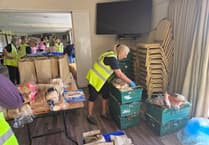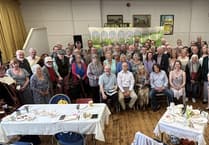FASTER and more reliable broadband is heading to Okehampton after it was named among 13 rural communities to benefit from a new broadband trial.
Openreach engineers will be working in the town to test a range of new tools and techniques as they install the latest ‘full’ fibre-to-the-premises (FTTP) broadband.
The first homes and businesses should be able to order their new FTTP broadband services in time for Christmas 2019, with work continuing during 2020.
When the build is complete, people living and working in Okehampton will have access to download speeds of up to one gigabit per second (1Gbps) — about 18 times faster than the current UK average.
Across the UK, more than 50,000 homes and businesses are included and it’s hoped the pilot will pave the way for a much bigger upgrade of rural homes and businesses in smaller, less accessible remote locations.
In Devon and Cornwall only one other community has been selected to take part — Ottery St Mary in east Devon.
The installation is being rolled out by Openreach, part of BT, which is responsible for the communications infrastructure for the UK.
Kim Mears, Openreach’s managing director for infrastructure, said: ‘This is a really important trial for Openreach and it’s great that Devon is set to play a leading role. We understand the importance of bringing great connectivity to rural communities and as well as providing fantastic broadband for people living in Okehampton and Ottery St Mary, we hope this provides us with the platform to extend our reach to hundreds of thousands more rural premises in the coming years.
‘We have already done a lot in Devon, through our partnership with local authorities and by joining forces with a number of communities who’ve asked to work directly with us. But we know there is more to do and we can’t waited to get started.’
The trial is part of Openreach’s ambition to extend its FTTP network into areas that were considered more difficult or expensive for the private sector to upgrade commercially — and could potentially become eligible for being included in Openreach’s ‘Fibre First’ investment programme in the years ahead — if the right investment conditions are met.
Openreach engineers are testing a number of innovative tools — that enable work to be done faster and at less cost — including a specialised trench digging tool called a diamond cutter. It’s a giant rotating circular blade with diamonds embedded in the metal coating on its edge — enabling it to slice through pavements and roads leaving a neat channel into which the machine simultaneously feeds in tubing for fibre-optic cables.
The specialist kit is capable of installing 700 metres of cabling a day — more than 20 times that of using traditional methods of drilling and excavation, slashing the time taken to deploy fibre by months.
The company is also trialling ‘remote nodes’ — where fibre-optic cables can be built out from specially-adapted existing green roadside cabinets. Specialised broadband-boosting equipment installed inside the cabinet enables full fibre connections to extend by more than one and a half times their current reach, with the capacity to connect more than 1,000 premises. By ‘piggy-backing’ on the existing network, engineers can take full fibre further and faster — while avoiding up to six months in time and associated cost involved in deploying new fibre cables or ‘spines’ from an exchange to remote rural areas.
Clive Selley, chief executive of Openreach, said: ‘At Openreach, we’ll never be just a city fibre provider. We’ve always worked hard to improve connections to isolated, less commercially attractive communities through inventive engineering and effective funding partnership models.
‘In recent years we’ve been extending our full fibre network into rural areas — mostly in partnership with local authorities and government — but the economics are clearly challenging and we want to do more. We know that around ten per cent of the country will need to the support of public subsidy, but these trials will help us test a bunch of new techniques that could help us in other rural areas.
‘The trials will also give us a much clearer picture of what the technical challenges in these kinds of rural areas are. We hope they’ll go a long way towards developing the tools, skills and innovations required to make sure that nobody’s left behind in the full fibre future.’
According to recent government statistics around 11-million people in the UK, or approximately 17 per cent of the population, live in rural areas.
The rural pilot locations have been carefully chosen to be representative of a much wider number across the UK with various factors being considered, including size, location, the extent, quality and make-up of the existing network and access to newly-skilled engineers in the area.





Comments
This article has no comments yet. Be the first to leave a comment.